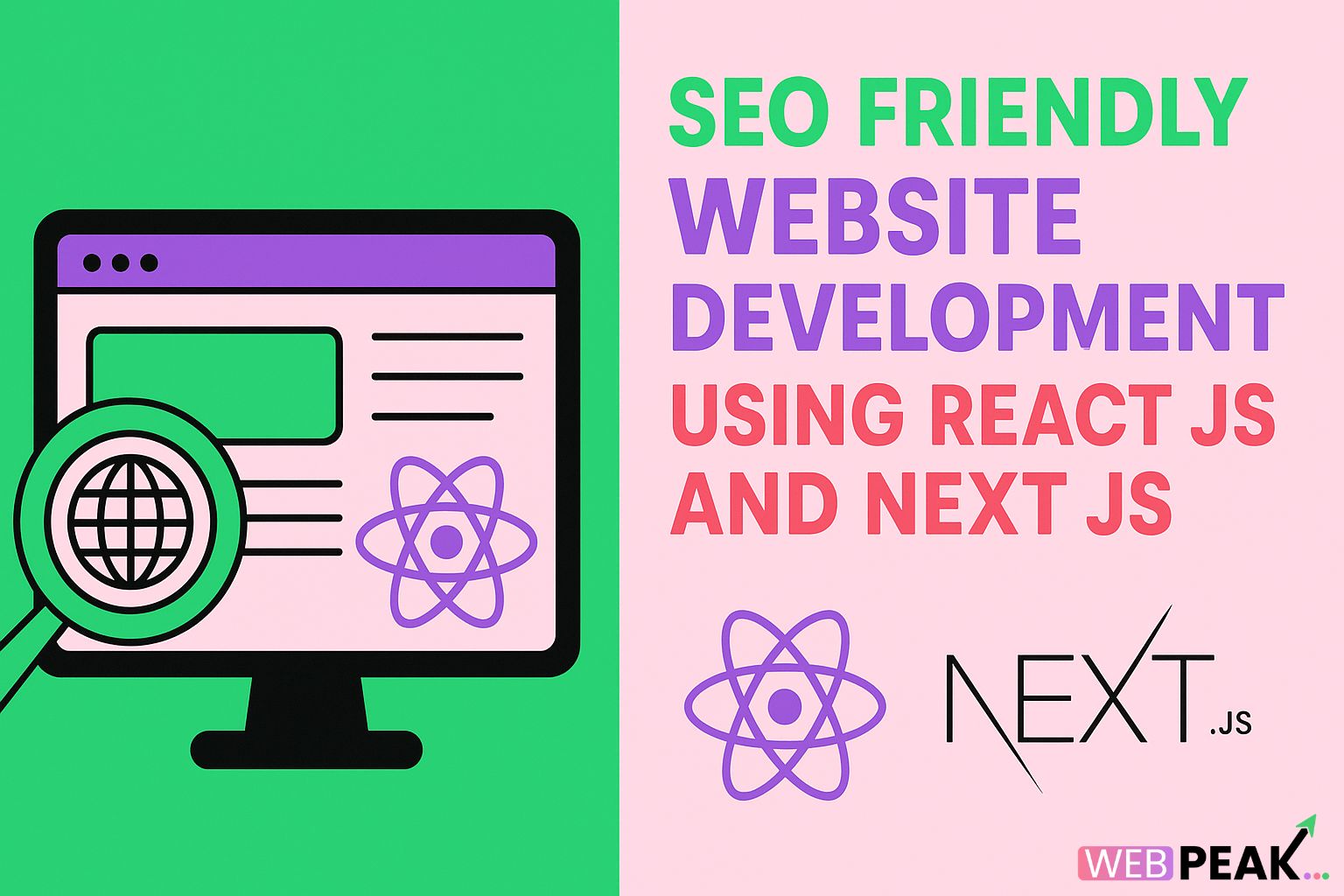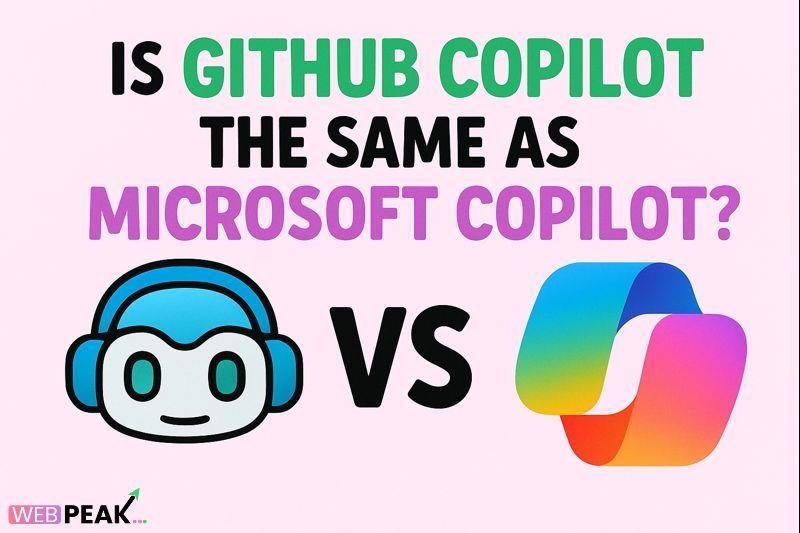SEO Friendly Website Development Using React JS and Next JS [Complete Guide]
In today’s digital-first world, businesses need fast, scalable, and search engine optimized websites to stand out. One of the most effective approaches is SEO friendly website development using React JS and Next JS. These modern JavaScript frameworks not only power interactive, user-friendly applications but also solve critical SEO challenges that traditional single-page applications face. In this comprehensive guide, we’ll explore how React JS and Next JS can help you build high-performing websites that search engines love, why SEO matters in modern development, and how you can leverage professional support from WEBPEAK for end-to-end web development and marketing services.
Why SEO Friendly Website Development Matters
Search engines like Google prioritize websites that load quickly, provide great user experiences, and offer content that can be easily crawled. Without SEO considerations, even the most visually stunning website can fail to attract organic visitors. Traditional single-page applications built with React JS often struggle with SEO because content is rendered dynamically on the client side, making it harder for search engines to index properly. That’s where Next JS enters the picture with server-side rendering and static site generation.
What is React JS?
React JS is a popular JavaScript library developed by Facebook for building user interfaces. Its component-based architecture allows developers to create reusable elements, making large-scale applications manageable and efficient. React JS powers many of today’s most successful applications because of its performance, flexibility, and developer ecosystem.
Core Features of React JS
- Component-Based Architecture: Build encapsulated components that manage their own state.
- Virtual DOM: Faster updates and rendering for a smoother user experience.
- Reusable Code: Write components once and use them across multiple projects.
- Rich Ecosystem: Large community support and integration with countless libraries.
What is Next JS?
Next JS is a React framework created by Vercel that focuses on improving performance and SEO. It builds on React’s strengths while adding features like server-side rendering (SSR),static site generation (SSG), API routes, and automatic code splitting. This combination makes Next JS ideal for developing websites that need both speed and visibility on search engines.
Core Features of Next JS
- Server-Side Rendering (SSR): Pages are rendered on the server before being sent to the client, making them search-engine friendly.
- Static Site Generation (SSG): Pre-renders pages at build time for lightning-fast performance.
- API Routes: Simplifies backend functionality without external servers.
- Automatic Image Optimization: Enhances performance with built-in image optimization tools.
React JS vs Next JS Performance
When comparing React JS vs Next JS performance, both frameworks excel in their own ways. React JS alone provides incredible flexibility for creating interactive user interfaces. However, React’s client-side rendering means that content is not immediately visible to search engines, potentially hurting SEO. Next JS solves this problem with SSR and SSG, ensuring faster load times and better crawlability. From an SEO perspective, Next JS usually outperforms plain React JS, making it a preferred choice for marketing-driven websites.
SEO Benefits of Next JS
For businesses looking to enhance their online visibility, Next JS provides numerous SEO advantages:
- Improved Crawlability: Server-rendered pages allow search engines to read content directly.
- Faster Load Times: Static rendering and automatic optimization improve Core Web Vitals.
- Better Mobile Experience: Next JS optimizes images and scripts for smaller devices.
- Meta Tag Management: Easily control titles, descriptions, and Open Graph data.
- Internationalization (i18n): Supports multilingual SEO strategies.
Key Steps for SEO Friendly Website Development Using React JS and Next JS
1. Plan Website Architecture with SEO in Mind
Start by defining a clear website hierarchy with proper URL structures. Next JS makes it easy to set up nested routes that mirror content categories, which helps search engines understand site structure.
2. Implement Server-Side Rendering
Using SSR ensures that your website content is fully rendered on the server before reaching users. This is critical for ensuring search engines index your pages effectively.
3. Optimize Metadata
Next JS allows developers to manage metadata using the <Head> component. Titles, descriptions, canonical tags, and social media meta tags should be carefully optimized for every page.
4. Focus on Site Speed
Performance is a ranking factor. Utilize Next JS features like image optimization, code splitting, and lazy loading. Minify CSS and JavaScript, and use a Content Delivery Network (CDN) for global reach.
5. Ensure Mobile Friendliness
With mobile-first indexing, responsive design is essential. Next JS supports responsive images and layouts out-of-the-box, helping your site deliver seamless mobile experiences.
6. Add Schema Markup
Structured data improves search visibility by enabling rich snippets. Implement JSON-LD with Next JS to highlight product details, reviews, or FAQs directly in search results.
7. Secure the Website (HTTPS)
Security is both an SEO ranking factor and a user trust factor. Always deploy your Next JS applications with SSL certificates.
8. Monitor and Optimize Continuously
SEO is ongoing. Use tools like Google Search Console, Lighthouse, and analytics platforms to measure performance, keyword rankings, and technical issues. Continuous optimization is key to long-term success.
Common Mistakes to Avoid in React and Next JS SEO
- Ignoring server-side rendering for important pages.
- Not setting up proper meta tags and Open Graph tags.
- Overlooking page speed optimization and lazy loading.
- Failing to implement structured data.
- Creating duplicate content without canonical tags.
Why Choose WEBPEAK for React JS and Next JS Development
Building an SEO friendly website requires a blend of technical expertise and marketing strategy. That’s where WEBPEAK comes in. As a full-service digital marketing and web development company, WEBPEAK specializes in creating fast, SEO-optimized websites using modern frameworks like React JS and Next JS. In addition, their team offers digital marketing and SEO services to ensure your website not only looks great but also ranks high on Google. By partnering with experts, you save time, reduce risks, and maximize your online visibility.
Best Practices for Long-Term SEO Success with Next JS
- Regular Content Updates: Keep blogs, landing pages, and product pages fresh with new content.
- Internal Linking: Create a strong internal link structure to guide crawlers.
- Backlink Strategy: Promote your content to earn high-quality backlinks.
- Accessibility: Ensure your site is usable for everyone, including those with disabilities.
- Analytics Tracking: Continuously analyze performance to adapt to algorithm updates.
FAQs on SEO Friendly Website Development Using React JS and Next JS
Is React JS SEO friendly?
React JS alone is not inherently SEO friendly because it relies on client-side rendering. However, with frameworks like Next JS or solutions like server-side rendering, React-based websites can achieve excellent SEO results.
Why is Next JS better for SEO than React JS?
Next JS supports server-side rendering and static site generation, which makes content immediately accessible to search engines. This improves crawlability, page speed, and ranking potential compared to client-side rendering in React.
How can I optimize my Next JS website for SEO?
Optimize metadata, ensure mobile responsiveness, improve load speeds, implement structured data, and regularly update content. Using Next JS’s built-in features like image optimization and code splitting further enhances SEO.
Does Google index React JS websites?
Google can index React JS websites, but it often requires additional optimization. Without SSR or SSG, indexing may be inconsistent. That’s why Next JS is a preferred solution for SEO-friendly development.
What services does WEBPEAK provide?
WEBPEAK offers end-to-end solutions including web development, digital marketing, and SEO services. They specialize in modern frameworks like React JS and Next JS to deliver fast, scalable, and SEO-optimized websites for businesses.
Can I migrate my existing React website to Next JS?
Yes, migration is possible and often beneficial. Moving a React app to Next JS can enhance SEO, improve performance, and provide more robust features for scaling your application.
Conclusion
SEO friendly website development using React JS and Next JS is the foundation of successful digital presence today. By leveraging the power of Next JS for SEO and React JS for dynamic user interfaces, businesses can build high-performing websites that attract, engage, and convert visitors. To maximize your results, working with experts like WEBPEAK ensures that every technical and marketing aspect is handled with precision. In the competitive online landscape, the right technology and the right partnership can make all the difference.





